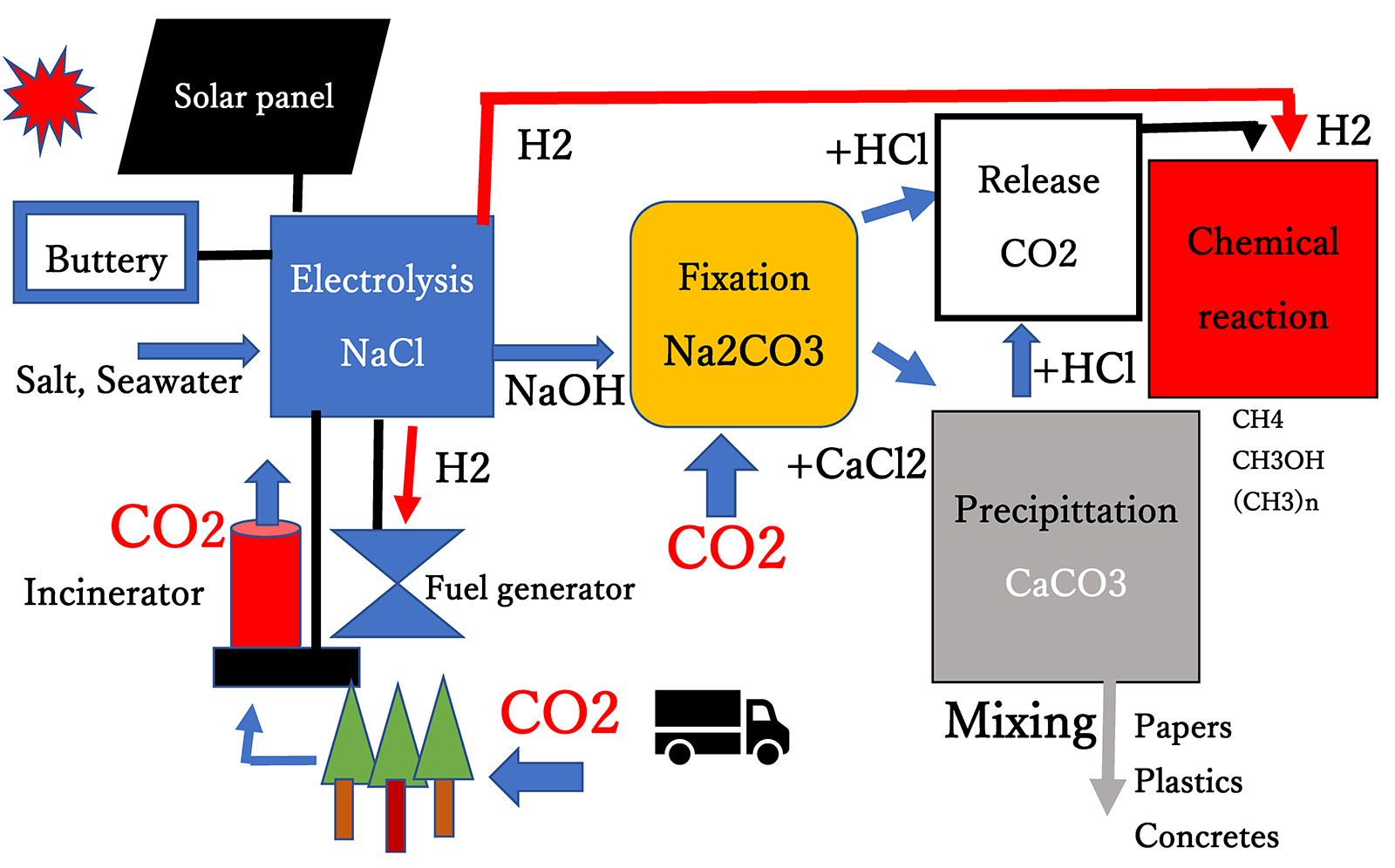 Open Access
Open Access
COMMUNICATIONS
Sustainable Circulating Energy System for Carbon Capture Usage and Storage (CCUS)
1 The Room of Emeritus Professor, Dokkyo Medical University, Mibu, Tochigi, 321-0293, Japan
2 Bioscience Laboratory, Environmental Engineering Co., Ltd., Takasaki, Gunma, 370-0041, Japan
3 The President Office, KSI, Takasaki, Gunma, 370-1201, Japan
4 Department of Energy and Nuclear Engineering, Faculty of Engineering and Applied Science, Ontario Tech University, Oshawa, ON L1H 7K4, Canada
* Corresponding Author: Kenji Sorimachi. Email:
(This article belongs to the Special Issue: Innovative Approaches in Clean Energy Systems: Integration, Sustainability, and Policy Impact of Renewable Energy)
Energy Engineering 2025, 122(6), 2177-2185. https://doi.org/10.32604/ee.2025.064975
Received 28 February 2025; Accepted 30 April 2025; Issue published 29 May 2025
Abstract
Recently, we developed an innovative CO2 capture and storage method based on simple chemical reactions using NaOH and CaCl2. In this technology, it was newly found that the addition of CO2 gas produced CaCO3 (limestone) in the solution of NaOH and CaCl2 at less than 0.2 N NaOH, while at more than 0.2 N NaOH, Ca(OH)2 formation occurred merely without CO2. The present study has been designed to develop an integrated system in which the electrolysis unit is combined with the CO2 fixation unit. As the electrolysis of NaCl produces simultaneously not only electricity but also H2 and Cl2, the produced H2 could be supplied to the hydrogen generator to produce further electricity, which could be used for the initial NaCl electrolysis for NaOH production. Contrarily, the combination of incinerators with electrolytic generators has already been established to supply electricity, as thermal power plants use coals or wastes. This electricity-providing unit could be replaced with a solar panel plant or with a storage buttery. The present integrated system, consisting of various electricity-providing methods and CO2 fixation units, is a sustainable circulating energy system and carbon capture, usage, and storage (CCUS) system without environmental concerns. In addition, an unexpected-tremendous amount of the burned wood, which was produced by the big mountain or forest fires, could be disposed of by our integrated CO2 fixing system with the incinerator without environmental concerns along with both H2 and CaCO3 productions. Thus, our simple technology must contribute immediately and economically to disaster recovery.Graphic Abstract

Keywords
Cite This Article
 Copyright © 2025 The Author(s). Published by Tech Science Press.
Copyright © 2025 The Author(s). Published by Tech Science Press.This work is licensed under a Creative Commons Attribution 4.0 International License , which permits unrestricted use, distribution, and reproduction in any medium, provided the original work is properly cited.


 Submit a Paper
Submit a Paper Propose a Special lssue
Propose a Special lssue View Full Text
View Full Text Download PDF
Download PDF Downloads
Downloads
 Citation Tools
Citation Tools